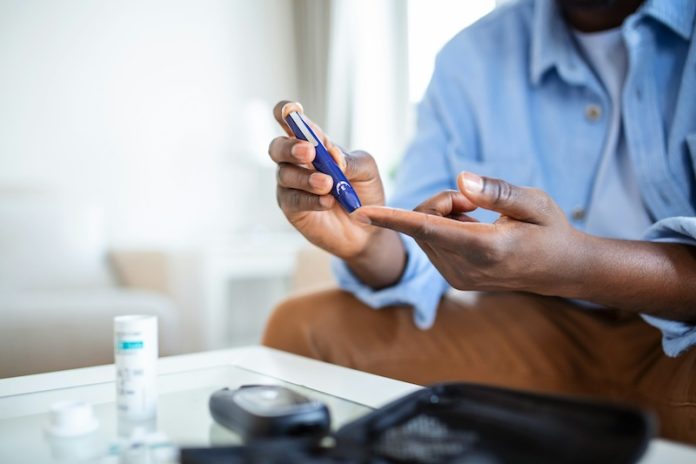
Type 2 diabetes is a long-term condition that affects how your body uses sugar (glucose) for energy. Over time, high blood sugar levels can cause serious health problems in different parts of the body, including the eyes, kidneys, nerves, heart, and feet.
Many of these problems develop slowly, and the early signs may be easy to miss. That’s why knowing what to watch out for is so important. Spotting these warning signs early can help prevent further damage and improve your long-term health.
One of the most common complications of diabetes is nerve damage, known as diabetic neuropathy. This can cause symptoms like tingling, burning, or numbness in the hands or feet. At first, these feelings may come and go, but they can get worse over time.
Some people may lose sensation in their feet, which increases the risk of unnoticed cuts or injuries that can lead to infections. According to research published in Diabetes Care, up to 50% of people with diabetes develop some form of nerve damage, especially if their blood sugar is not well controlled.
Another early sign of complications is frequent or worsening vision problems. High blood sugar can damage the tiny blood vessels in the eyes, leading to a condition called diabetic retinopathy. You might notice blurry vision, dark spots, or difficulty seeing at night.
If left untreated, this can lead to vision loss. Regular eye exams are essential, even if you don’t have noticeable symptoms, because damage can happen without pain or warning.
Kidney problems are another silent but serious risk. The kidneys filter waste from your blood, but high blood sugar can damage them over time. This condition is called diabetic nephropathy.
Early warning signs include swelling in the ankles, legs, or feet, and changes in how often you need to urinate. Research shows that about 1 in 3 adults with diabetes may develop kidney disease, which is why regular urine and blood tests are key to catching it early.
Heart disease is also more common in people with diabetes. You may not feel anything at first, but warning signs can include shortness of breath, chest pain, or feeling unusually tired.
According to the American Heart Association, adults with diabetes are up to four times more likely to die from heart disease than those without it. That’s why blood pressure and cholesterol levels should also be checked regularly in addition to blood sugar.
Foot problems are another red flag. Because of poor blood flow and nerve damage, small injuries like blisters or cuts can become serious. You may not feel the pain, so infections can go unnoticed.
Look out for sores that don’t heal, changes in skin color or temperature, and swelling. In extreme cases, untreated infections can lead to amputations, which still happen too often among people with poorly controlled diabetes.
Lastly, warning signs of cognitive and emotional issues are sometimes overlooked. Some studies have found that poorly managed diabetes may be linked to memory problems and higher rates of depression and anxiety.
If you or someone you know with diabetes is experiencing mood changes, confusion, or trouble concentrating, it’s worth bringing up with a healthcare provider.
In summary, the body often gives us early signals when complications from type 2 diabetes begin to appear. Tingling feet, blurry vision, swelling, fatigue, slow-healing wounds, and changes in mood or thinking are all signs worth taking seriously.
The good news is that managing blood sugar, keeping regular medical appointments, and adopting a healthy lifestyle can prevent or delay many of these complications. Acting early is the best way to stay healthy and avoid serious damage down the road.
If you care about diabetes, please read studies about Vitamin D and type 2 diabetes, and to people with diabetes, some fruits are better than others.
For more health information, please see recent studies that low calorie diets may help reverse diabetes, and 5 vitamins that may prevent complication in diabetes.
Copyright © 2025 Knowridge Science Report. All rights reserved.



